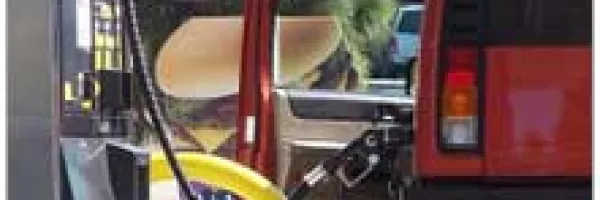
7 Ways to Spend Less on Gas
There’s a lot to keep an eye on as a driver - the road, your mirrors, your speedometer… and, of course, the price of gasoline. This is the last post in a three part series on what’s driving gas prices, and how you can save at the pump.
With gas prices so high, every drop of fuel counts. Here are seven ways to make the most of the fuel you buy.
1. Don’t Top Off Your Tank
You’ve probably seen warnings about topping off your gas tank before, but it turns out that topping off is harmful to the environment, your car, and your wallet.
- Overfilling makes it easy to spill gas. Not only is this a fire hazard, but gasoline vapors are harmful to breathe, and you’re still paying for the gas you pump, whether or not it ends up in your tank.
- Your vehicle’s vapor collection system could become damaged. As your car warms, the gasoline in your tank will expand, and if your tank is overfilled, it could be forced into your vehicle’s vapor collection system, damaging or ruining it.
- You could end up paying for gas you don’t even use. If you add more gas after the pump clicks off automatically, it may be drawn into the gas pump’s vapor recovery system and fed back into the station’s storage tanks.
2. Check Your Fuel Cap
To prevent evaporation, make sure your fuel cap is on tight and isn’t broken or cracked. Fuel caps are easily replaceable at an auto parts store.
3. Don’t Pay for Premium Unless You Have To
Check your owner’s manual to find out what grade of gas the manufacturer recommends. If your car doesn’t require premium gas, there’s no reason to use it. It won’t provide better performance - it’ll just cost you 20 to 30 cents more per gallon.
Find out more at CarTalk and Edmunds.com.
4. Keep Tires Properly Inflated
The decrease in fuel economy caused by underinflated tires results in more than one billion gallons of wasted gasoline annually in the U.S. alone.
Make sure you learn how to find out the correct pressure for your tires, check your current tire pressure, and add or remove air.
5. Rethink Where and When You Drive
To prevent unnecessary idling, and boost your gas mileage, AAA recommends:
- Driving during cooler parts of the day when possible
- Avoiding congestion
- Planning your route in advance
- Planning where to park
6. Don’t Speed
Speeding might get you to your destination a little faster, but it’s not very fuel-efficient. Fuel efficiency usually decreases rapidly at speeds above 55 MPH. Driving 65 MPH instead of 75 MPH would reduce fuel costs by 13%, and driving 55 MPH would save you 25%.
And that’s besides the cost of a ticket or an accident!
7. Look for the Best Prices
Websites such as GasBuddy.com offer gas price listings that you can search by zip code. While it’s probably not worth it to drive out of your way for cheaper gas, you can easily get an idea of where in your area has the best prices, and plan your fuel-ups for times when you’re in those areas.